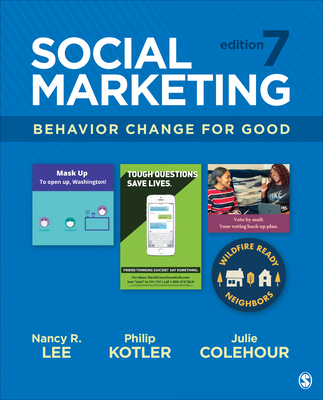图书简介
As genetics becomes increasingly important in our everyday environment, misinterpretation of its scientific foundation leads to mixed feelings of hope and fear about the potential of its applications. Trajectories of Genetics uncovers the many facets of genetics - from humans to animals, plants, and the microscopic world through more than a century of scientific progress. It summarizes the evolution of ideas as the organization and functioning of genetic material has become clearer. The book analyzes how genetic information transmitted from generation to generation in nucleic acids enables the fulfillment of biological functions and the evolution of the living world. It illustrates current developments in many areas: the improvement of species of agronomic interest, an increased understanding of microbial worlds, the management of genetic pathologies and the synthesis of new forms of life.
Introduction ix Chapter 1. Following Ariadne’s Thread from Genetics to DNA 1 1.1. The birth of genetics 1 1.2. The foundations of a new science 5 1.3. Gene, locus and genetic maps 7 1.4. Mutagenesis: first ideas on the material nature of the gene 10 1.5. First ideas on gene products 13 1.6. The order of things and the elements of disorder 14 1.7. Dissecting the invisible: allelism, cistron and the locus again 16 1.8. The DNA trail 19 1.9. Important ideas to remember 21 1.10. References 21 Chapter 2. The Molecular Nature of Genes and Their Products 25 2.1. DNA and its replication 25 2.2. Permanence and alteration of DNA, mutations 26 2.3. Protein synthesis and the central dogma of molecular biology 28 2.4. The genetic code: how to read the genetic message 35 2.5. First paradigm of gene expression: the bacterial lactose operon 40 2.6. Reverse transcription and retrogenes 43 2.7. Exons, introns and splicing: the first complexity of RNA life 44 2.8. Sequence editing: the second complexity of RNA life 51 2.9. RNA interference and epigenetics 52 2.10. Important ideas to remember 56 2.11. References 57 Chapter 3. Chromosomes and Reproduction 61 3.1. The \"true\" chromosomes 61 3.2. Sexual reproduction and alternating generations 63 3.3. Meiosis 65 3.4. Genetic determinism of sex 70 3.4.1. From gametes to sex 70 3.4.2. Sex determinism in animals 71 3.4.3. Sex determinism of brown algae 74 3.5. Clonal reproduction and its derivatives 75 3.6. The genetics of organelles 77 3.6.1. In unicellular eukaryotes 78 3.6.2. In humans and animals 78 3.6.3. In plants 79 3.7. Important ideas to remember 80 3.8. References 81 Chapter 4. From Genetic Engineering to Genomics 83 4.1. Restriction of DNA 83 4.2. Recombinant DNA and the birth of genetic engineering 85 4.3. Sequencing of biological macromolecules 87 4.4. The beginnings of genomics: the very first genome sequences 91 4.5. The trigger 92 4.6. The impact of the first real genomes 93 4.7. The human genome 96 4.8. New methods of genome sequencing and the current state of genomics 98 4.9. Important ideas to remember 100 4.10. References 101 Chapter 5. Uniqueness and Polymorphism of Genomes 103 5.1. The immensity of nucleic acid sequences 104 5.2. Components of genomes and their replication 105 5.3. A little perspective on the content of genomes 109 5.4. Traces of the past and driving forces for the future 112 5.5. Genes in genomes 117 5.6. Genes and genetic determinism 120 5.7. Natural populations: pan-, core-genomes and SNP 123 5.8. Population genomics 126 5.9. The genetics of genomes 127 5.10. Important ideas to remember 128 5.11. References 129 Chapter 6. Natural Dynamics and Directed Modifications of Genomes 131 6.1. The dynamics of genomes 131 6.2. Hereditary acquisitions 134 6.2.1. Transformation by DNA and horizontal gene transfer 134 6.2.2. Primary endosymbioses of eukaryotes 136 6.2.3. Viruses and transposable elements 137 6.3. Directed manipulations of genomes: principles and tools 139 6.4. Directed manipulations of genomes: applications 144 6.5. Important ideas to remember 146 6.6. References 147 Chapter 7. Of Genes and Humans 149 7.1. Ancient DNA and human history 150 7.2. Traces of the past in today’s human genome 153 7.2.1. Adaptations to the world’s regions 154 7.2.2. Adaptations to lifestyles 154 7.2.3. Adaptations to diseases 155 7.2.4. Maladaptation following past selections 156 7.2.5. Conclusion 157 7.3. Traces of past climates in the trees of our forests 157 7.4. The domestication of cultivated plants 159 7.4.1. Characteristics of domestication 160 7.4.2. The mutations that enabled domestication 162 7.5. Selection of livestock 163 7.6. Conclusion 167 7.7. Important ideas to remember 168 7.8. References 169 Chapter 8. Genetics and Human Health 173 8.1. \"Mendelian\" and multifactorial diseases, a continuum of complexity 174 8.2. Interpretation and use of DNA sequences 175 8.3. Autism 177 8.4. Gene therapy 178 8.5. The multiple genetic causes of cancers 181 8.6. Microbiota 184 8.7. Important ideas to remember 187 8.8. References 188 Chapter 9. Now and Tomorrow 191 9.1. A living world to be further explored 191 9.2. Genome synthesis 197 9.3. New lives 200 9.4. Important ideas to remember 203 9.5. References 203 Conclusion 207 Glossary 213 References 233 Index 235
Trade Policy 买家须知
- 关于产品:
- ● 正版保障:本网站隶属于中国国际图书贸易集团公司,确保所有图书都是100%正版。
- ● 环保纸张:进口图书大多使用的都是环保轻型张,颜色偏黄,重量比较轻。
- ● 毛边版:即书翻页的地方,故意做成了参差不齐的样子,一般为精装版,更具收藏价值。
关于退换货:- 由于预订产品的特殊性,采购订单正式发订后,买方不得无故取消全部或部分产品的订购。
- 由于进口图书的特殊性,发生以下情况的,请直接拒收货物,由快递返回:
- ● 外包装破损/发错货/少发货/图书外观破损/图书配件不全(例如:光盘等)
并请在工作日通过电话400-008-1110联系我们。
- 签收后,如发生以下情况,请在签收后的5个工作日内联系客服办理退换货:
- ● 缺页/错页/错印/脱线
关于发货时间:- 一般情况下:
- ●【现货】 下单后48小时内由北京(库房)发出快递。
- ●【预订】【预售】下单后国外发货,到货时间预计5-8周左右,店铺默认中通快递,如需顺丰快递邮费到付。
- ● 需要开具发票的客户,发货时间可能在上述基础上再延后1-2个工作日(紧急发票需求,请联系010-68433105/3213);
- ● 如遇其他特殊原因,对发货时间有影响的,我们会第一时间在网站公告,敬请留意。
关于到货时间:- 由于进口图书入境入库后,都是委托第三方快递发货,所以我们只能保证在规定时间内发出,但无法为您保证确切的到货时间。
- ● 主要城市一般2-4天
- ● 偏远地区一般4-7天
关于接听咨询电话的时间:- 010-68433105/3213正常接听咨询电话的时间为:周一至周五上午8:30~下午5:00,周六、日及法定节假日休息,将无法接听来电,敬请谅解。
- 其它时间您也可以通过邮件联系我们:customer@readgo.cn,工作日会优先处理。
关于快递:- ● 已付款订单:主要由中通、宅急送负责派送,订单进度查询请拨打010-68433105/3213。
本书暂无推荐
本书暂无推荐















